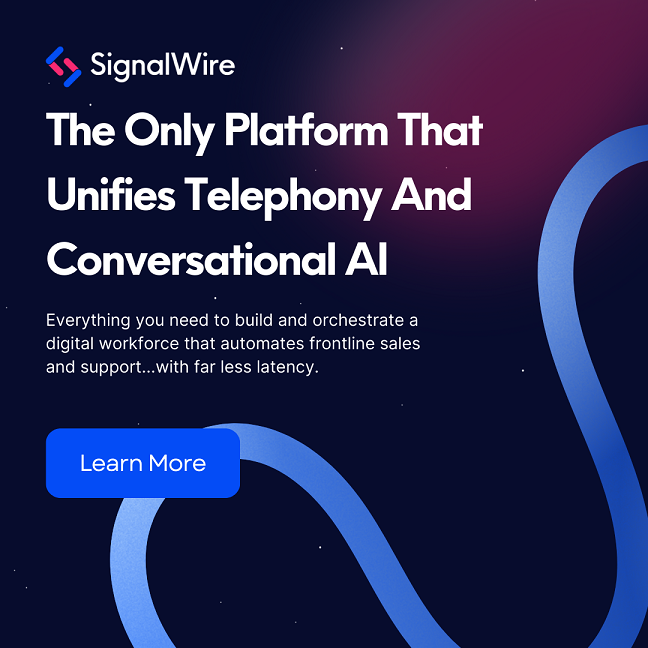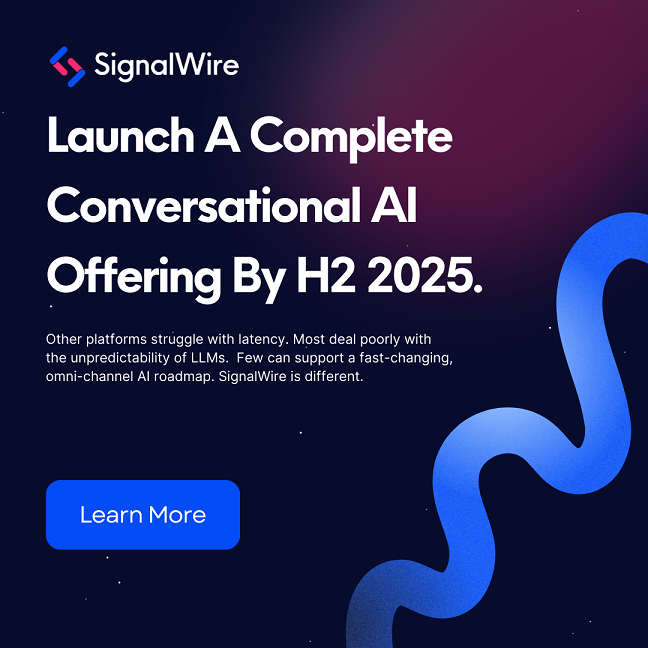Understanding the voice AI landscape in 2025
Voice AI has now evolved from an experimental prototype to a crucial tool for enterprise automation. With massive advances in large language models (LLMs), text-to-speech (TTS), and speech-to-text (STT), there is an assumption that building voice AI is simply a matter of connecting these components with telephony infrastructure.
However, real-world implementation reveals a more complicated reality. It might sound like any other development project, but when you try to stitch these components together, things start falling apart. Each individual component introduces complex state dependencies, latency constraints, and scaling inefficiencies when deployed in production.
That’s why, when it comes to real-time, scalable, enterprise-grade AI voice, the industry is stuck. Companies see the promise but get trapped in a cycle of prototypes, integrations, and rework, never quite achieving the seamless, intelligent, natural AI communication they envisioned.
The promise of AI agents crashes against the limitations of fragmented systems. To build truly effective AI-powered contact centers requires overcoming the limitations of fragmented architectures and designing a tightly integrated solution.
First, understand the hidden obstacles that prevent successful deployment. AI voice systems should not be a Frankenstein project of LLMs, TTS, STT, and legacy telecom platforms. If your goal is to implement AI-powered voice, chat, and video that truly works and scales, here are the five biggest roadblocks standing in your way (and how to avoid them before they stall your progress).
Pitfall #1: The "it seems simple" trap
Creating a voice AI system appears straightforward: combine language models for conversation, speech recognition for input, voice synthesis for output, and telephony for delivery.
Many development teams start with this modular approach, assuming they can simply connect these components through APIs: just plug in LLMs, STT, and TTS. But every additional integration introduces delays, state management complexities, and points of failure, especially at scale.
When you attempt to stitch together separate systems, each component introduces additional network latency, new points of potential failure, complex state management challenges, and synchronization problems at scale. A conversation that requires data to travel between multiple separate systems inevitably suffers from delays and disruptions that break the natural flow of human-like conversation.
Solution: The integrated approach
Rather than treating voice AI as a collection of separate APIs, successful implementations require an integrated system architecture. AI capabilities should be integrated directly into the media stack, creating a pipeline for voice processing.
This approach will minimize unnecessary network hops to reduce overall system latency, create more resilient connections, and overall, maintain conversation continuity. By processing voice, language understanding, and response generation within a unified framework, the AI voice system can achieve the sub-500ms latency necessary for conversations that feel natural.
Pitfall #2: The proof of concept wall
You may have been able to successfully create impressive voice AI demos that work perfectly in controlled environments, with demo videos that always look smooth… when you edit out the lag. However, when these systems move into production with real users and unpredictable conditions, they quickly deteriorate.
In real-world deployments, however, latency can spike during high call volumes, WebSockets could drop and hang up on callers, AI can lose context when network issues occur, and AI might face an inability to handle unexpected user interruptions.
The controlled environment of a demo rarely reflects the chaotic conditions of real-world deployment, leading to overall performance degradation at scale and disappointing results when voice AI meets actual users.
Solution: Build for real-world resilience
To overcome the proof-of-concept wall, voice AI systems must be designed with production realities in mind from the beginning. That means AI, speech processing, and telephony should already be integrated into a single real-time execution pipeline, enabling bidirectional streaming and proactive state persistence across network fluctuations. Real-time error recovery mechanisms should gracefully handle packet loss and allow the call state at the telephony level to preserve context even during network disruptions.
Systems should also gracefully handle interruptions, conversation transitions and unexpected user behavior by continuing the conversation with the user while, for example, pulling CRM data in the background.
Finally, test under variable network conditions and high load scenarios, focusing on resilience and real-world performance from the start.
Pitfall #3: The multi-channel integration labyrinth
The modern customer expects consistent experiences across all communication channels. Many organizations start with a single channel (often text-based chat) and later attempt to expand to voice, only to discover that their existing architecture doesn't translate well to real-time audio interactions.
In 2025, your AI system needs to work across voice, video, and messaging. But many AI solutions struggle to expand beyond their original channel, leading to clunky, disjointed experiences. Platforms without built-in telephony, video conferencing, and two-way text messaging may struggle to deliver the desired outcome.
You might find that:
Voice requires lower latency than text-based interactions
Different AI models optimized for different channels create inconsistent experiences
State management becomes exponentially more complex across channels
Development teams struggle with different technical requirements for each channel
Customer journeys break when moving between channels
When voice AI is treated as an afterthought to existing systems, the result is typically a disjointed experience that fails to meet customer expectations. That struggle will extend to video and messaging, too, if they’re not prioritized.
Solution: Channel-agnostic AI architecture
Rather than building separate AI systems for each channel, implement a unified AI engine that processes all inputs through the same cognitive framework, regardless of source. This avoids fragmentation and curates an omni-channel experience that creates consistent AI behavior across voice, chat, and video, all while maintaining context when users switch between channels.
Without an integrated approach, adding new communication channels leads to exponentially growing complexity. By leveraging AI that treats all communication channels as variations of the same fundamental interaction model, a seamless experience will follow customers across their preferred touchpoints.
Pitfall #4: The tool use conundrum
Basic voice AI that simply answers questions from a predefined knowledge base offers limited business value. Real impact comes when AI can interact with systems like CRMs, support ticketing platforms, payment gateways, and inventory management tools.
However, each additional integration introduces new complexity:
Multiple API calls increase overall latency (again)
Additional services create new points of failure
Webhook servers must scale independently
Security boundaries between systems complicate data access
Each tool requires specific error handling and fallback strategies
As voice AI connects to more backend systems, the architecture can become a fragile web of dependencies that's difficult to maintain and troubleshoot.
Solution: Native tool integration framework
A simple voicebot that answers preset FAQs is one thing. But when you need AI to interact with other systems, the complexity skyrockets quickly.
Instead of treating external tools as separate systems requiring complex integration, implement advanced voice AI that supports tool use as a native capability within the AI conversation framework, which allows AI to access business data without excessive API calls, maintains conversation flow during tool interactions, simplifies security and access control, enables real-time, context-aware tool utilization.
Integrated tool use directly in the voice AI platform means that AI agents can incorporate business processes and customer data into natural conversations. For true scalability, the AI, speech processing, telephony, and tool use must function within the same pipeline.
Pitfall #5: The compliance riddle
Across industries, voice AI systems need to be able to handle sensitive information including personally identifiable information (PII), payment details, and confidential data. Standard LLMs weren't designed with these security requirements in mind, creating significant compliance concerns that prohibit the adoption of more advanced AI.
Considerations include:
LLMs may inadvertently store sensitive information in their context window
Payment processing often requires PCI DSS compliance
Healthcare applications must maintain HIPAA compliance
Different regions have varying data protection requirements
Data leakage through insecure API transmissions.
Compliance must be prioritized, or organizations will have to choose between security and usability.
Solution: Security-first architecture
To launch enterprise-grade voicebots, you will likely need to collect sensitive information on live calls. How do you accomplish this without exposing sensitive data to public cloud LLMs?
Advanced voice AI implementations can address compliance requirements through architectural design rather than bolt-on security measures, and should separate sensitive data processing from AI interaction. Effective approaches include:
Dual-channel audio routing that processes sensitive data separately from AI conversation
Selective context management that excludes sensitive information from LLM inputs
Purpose-built compliance modes for specific regulatory frameworks
Secure processing zones for sensitive operations
Real-time redaction of sensitive information from transcripts and logs
By choosing tools to build voice AI that are already integrated tightly with compliance from the ground up, systems supported by AI can maintain both security and conversational fluidity, no matter the industry.
Building future-proof voice AI
The path to effective voice AI isn't found in choosing the right LLM or voice technology in isolation. Success comes from a holistic approach that addresses these five pitfalls through integrated system design.
The future of voice AI belongs to unified systems that prioritize integration, performance, and resilience over modular flexibility. By avoiding these common pitfalls and embracing a more cohesive approach, you can be at the forefront of unlocking the full potential of voice AI to actually transform customer interactions.
The future of voice AI is all about real-time, scalable, and secure conversational experiences. As you search for your holy grail AI system, remember that:
Voice AI requires tight integration between speech processing, language understanding, and telephony.
Real-world testing matters. Systems that work in demos often fail under production conditions.
Customers expect consistent experiences across voice, chat, and video.
Effective voice AI must interact seamlessly with backend systems and existing tools.
Compliance should be built into the system design, not added hastily as an afterthought.
By addressing these issues upfront, you can have your AI communication system functioning in the next few months. Don't just impress in demos – deliver the transformative customer experience in real-world deployments that we’ve all been talking about.




